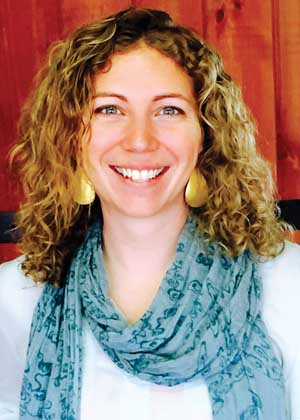A group of Eastern and Midwestern U.S. growers, cider makers and others interested in entering the hard cider business heard good news at a workshop at Penn State University’s Lehigh Valley campus.
Cider is growing.

Carla Snyder
“If hard cider were a category of craft beer, it would be the No. 2 selling category behind IPAs,” Carla Snyder, a Penn State Extension educator, said at the March workshop in Center Valley, Pennsylvania.
While the annual increase in demand for hard cider didn’t reach the 71 percent it did in 2014, it still increased by almost 11 percent in 2015. The number of new customers also rose by 55 percent last year.
Apple growers looking to break into the business also heard consumers are responding favorably to farm brands.
“Large brands are still driving the market and they continue to boost their farm-image branding,” Snyder said.
Changing strategies
The upward drive in demand in the U.S. market is predicted to run at 12 percent annually through 2020 and will be fueled by new cider varieties and new business launches, Snyder said.
As a result, U.S. marketing strategies will likely undergo a change. “Look for tradition and culture of the beverages to become as important as taste profiles,” she said.
Inevitably, consumers tend to make comparisons between cider and beer and wine. As that trend increases, experts say growers and cider makers should look for consumers to transfer the same expectations they have for craft beer to cider.
Snyder said few U.S. consumers knew much about the cider making process or how juice quality affects the end product. “Education on specific cider apple varieties and sweetness scale is necessary for market growth,” she said.
Consumers tend to prioritize taste over brand, Snyder said. That’s why cider makers looking to increase sales may want to introduce some new flavors to their offerings.
Last year, a number of cider makers did exactly that. “By mid-2015, the cider industry was experimenting with ginger, pear, cinnamon and a number of other seasonal flavors,” Snyder said.
The two flavors garnering the highest consumer interest were coffee/espresso and pumpkin.
Snyder also reported some new flavor trends in evidence at the 2015 Great Lakes International Cider and Perry Competition.
A number of cider makers there were introducing alternative apple ciders flavored with pear, peach and blackberries.
Others brought botanical-flavored beverages flavored with mainly elderflower, and aperitif-crafted ciders, which were similar to ice-wine.
Hopped and barrel-aged ciders were also making a strong showing, Snyder said. “Producers are experimenting with specific hop varieties and types of barrels to impart flavors into their ciders. It’s a method of differentiating their product in the marketplace,” she said.
Target marketing
Between October and December 2015, Snyder conducted two surveys to gauge industry efforts and consumer demand for hard cider.
One survey involved hard cider producers in Pennsylvania, North Carolina, Delaware and Virginia.
In the other, she surveyed almost 1,000 hard cider drinkers at cider festivals from New York to North Carolina, asking a number of questions ranging from why they tried cider to how long they had been drinking it and where they tried it the first time.
The results pointed to two marketing decisions growers might want to research thoroughly before implementing: using social media and building tasting rooms.
Less than one-third of hard cider consumers reported using social media as a means of gathering information about the product, but nearly 90 percent of producers said they used social media to deliver hard cider information to consumers.
In addition, just 16 percent of hard cider consumers reported buying cider in tasting rooms, yet more than half of producers said they had one. “Before building a tasting room, do your research to assure you can get a return on the investment,” she said.
A little less than half of the consumers surveyed said they tried hard cider for the first time because they liked other apple products. More than one-quarter of those surveyed said they enjoyed wine and believed hard cider to be a similar product. Eighteen percent said they liked to buy local products.
Taken together, producers can leverage these preferences by marketing locally and emphasizing their farming and orchard practices used to produce the apples they use to make their cider. Larger, commercial producers like Angry Orchard are using a similar approach, Snyder said.
Of those who identified themselves as cider drinkers, 41 percent most often chose beer when drinking alcoholic beverages, and 80 percent consume cider year-round.
Snyder thinks this offers another marketing opportunity for cider makers.
“If the majority of hard cider consumers are most often beer consumers, they may be responsive to the same things consumers of craft beers do: quality ingredients, clean, targeted marketing and local, hand-crafted production techniques.” •
– by Dave Weinstock






[…] Learn more about how marketing practices will need to change to meet such a demand in this overview of Snyder’s lecture on Good Fruit Grower! […]
[…] Learn more about how marketing practices will need to change to meet such a demand in this overview of Snyder’s lecture on Good Fruit Grower! […]